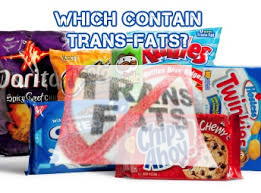Coronary Heart Disease. Alzheimer’s. Breast Cancer. Prostate Cancer. Type 2 Diabetes. Obesity. Infertility. Depression.
Just reading this list elicits a feeling of dread, especially considering that all of these illnesses are rampant in our society. And looking at statistics our fight against them more often than not feels equivalent to Sisyphus perpetually trying to keep his stone from rolling downhill. Last month marked a step in the right direction.
After more than a decade of study and deliberation, the U.S. Food and Drug Administration (FDA) has finally proposed a ban of trans fats, following the example of countries like Denmark, Iceland and Switzerland amongst others. It’s been a long and exhausting debate I followed closely during my seven years in New York. But although many people probably heard of them, equally as many have probably forgotten by now why it is so important to ban trans fats. It’s no surprise really – the debate was endless and lost the attention of the media years ago.
What’s the problem?
So what are trans fats, in lay man’s terms, and why are they a cause or risk for all those diseases listed on top? Trans fats are a type of unsaturated fat that exists naturally in extremely small amounts in animal fats such as meats or dairy. But all fats are not equal. Generally they contain long hydrocarbon chains, in which each carbon molecule can be orientated one of two ways around the bond that connects them with each other: cis, on the same side of a bond connecting the carbons, or trans, on opposite sides of that bond. Most fatty acids in the vegetable and animal kingdoms generally have cis orientations. However, in 1910 a German chemist found that he could artificially generate trans fats by adding hydrogen to cooking oil which would turned the liquid into a semi-solid, such as margarine or shortening.
So why was this so revolutionary? It turned out that using solid partially hydrogenated fats gave products a longer shelf life than butter would, while keeping the same texture and flavor of a product. Many products containing trans fats didn’t need to be refrigerated. In addition, it was cheap to produce. Really, it was a by-product (or contaminant) of a chemical reaction. And thus the age of processed food had begun.
Where Trans Fats Hide
Trans fats are definitely edible. In fact they are lurking in many a product we all have the occasional craving for. Think Doritos, fast food, baked goods you’re your local super market, bread stick, crackers but also instant noodles, coffee creamers, pancake mix, frozen ready-to-use pastry, frozen meals – and the list goes on. Tasty, mostly, and convenient. But here’s the caveat. What’s convenient (well, and good for the food industry) is not necessarily a good thing per se.
The Price of Convenience
Due to lack of research, scientists believed for decades that trans fats were actually a healthier alternative to so-called ‘natural’ products, which contain more saturated fat and a higher fat content overall. Turns out, this was wrong. Compared to saturated fats in animal foods, trans fats have been linked with a 2.5- to 10-fold higher risk of heart disease and increased bad (LDL) cholesterol levels, a 73% greater risk of female infertility, a potential 75% greater risk for breast cancer, and depression. There is also numerous evidence that trans fat increases the risk of type 2 diabetes and triggers inflammation in the body, a contributor to many chronic diseases. By banning trans fats the FDA estimates 20,000 heart attacks and 7,000 deaths could be prevented each year in the U.S. alone.
Avoiding Trans Fats
So what to do if you live in a country that has no ban but only limits trans fats in processed foods? Personally, I go with the easiest way, at least if you like cooking: home-prepared foods. I agree, I may not be the best example as I even make home-made snacks and pastry dough, but let me tell you, even if you live a busy life as most of us do, it is manageable. Time management is the key and it is well worth it. Not only will you end up with better tasting food but you will decrease the overall burden of your daily exposure to risky ingredients that can impact your future health. Just because one can’t see or feel it now doesn’t mean disease may not strike one day. It’s an accumulative effect.
But if time is not on your side in your daily life, than a good way to start is by avoiding foods that list partially hydrogenated vegetable oil, hydrogenated oil or shortening. Many, but not all, food companies have reformulated their products to remove trans fats so it’s important to always read the label.
As a scientist I am glad that effective research has finally led to a proposed ban of trans fats in the U.S. It highlights how important and instrumental research is to keeping our society healthy. But the changes are happening too slowly. For its results to be effective, to prevent disease, and cut down on highly lamented spiraling health costs, findings need to be implemented faster than they have been up to now. That‘s the only way to keep the stone from rolling further and further, faster and faster – until its momentum becomes unstoppable.


